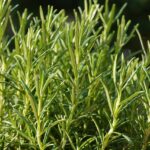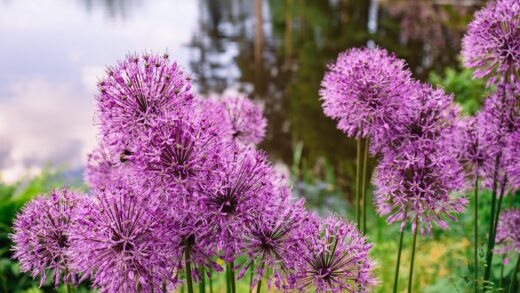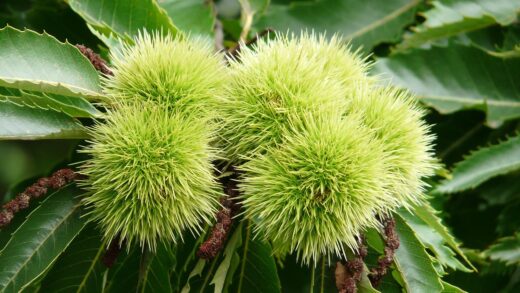Caring for the rosy primrose

The rosy primrose, a gem among early spring bloomers, offers a vibrant splash of color when most of the garden is still awakening from its winter slumber. Native to the Himalayan regions, this plant is not merely a visual delight but also a testament to nature’s resilience, thriving in conditions that might deter less hardy species. Understanding its unique requirements is paramount for cultivating healthy, vigorous plants that will reward you with a spectacular floral display year after year. Proper care involves a holistic approach, considering everything from soil composition and moisture levels to light exposure and nutritional needs, ensuring these magnificent plants reach their full potential. This guide provides a comprehensive overview of the essential practices required to successfully cultivate and maintain the stunning rosy primrose in your garden.
Its preference for moist, boggy environments sets it apart from many other garden perennials, making it an ideal candidate for waterside planting, bog gardens, or consistently damp borders. The key to its heart lies in replicating the cool, damp, and humus-rich conditions of its native alpine meadows. When these fundamental needs are met, the rosy primrose proves to be a remarkably low-maintenance and rewarding plant. Neglecting its need for moisture, however, is the quickest path to failure, as the plant will rapidly show signs of stress, such as wilting and scorching, from which it may not recover. Therefore, consistent moisture is the cornerstone of successful rosy primrose cultivation.
Beyond its moisture requirements, the plant appreciates a soil that is rich in organic matter, which not only helps retain water but also provides a steady supply of essential nutrients. Amending the soil with well-rotted compost, leaf mold, or manure before planting will create the ideal foundation for strong root development and overall plant health. This initial soil preparation is a critical step that pays long-term dividends, reducing the need for frequent fertilization later on. The soil should also be slightly acidic to neutral, as alkaline conditions can hinder nutrient uptake and lead to deficiencies.
Vigilance throughout the growing season is also crucial for maintaining the health and beauty of your rosy primroses. This includes monitoring for any signs of pests or diseases, although the plant is relatively resistant to many common garden ailments. Regularly removing spent flower stalks, a practice known as deadheading, can encourage a longer blooming period and directs the plant’s energy towards vegetative growth rather than seed production. As the season progresses, ensuring the plants do not become overshadowed by more aggressive neighbors will guarantee they receive adequate light and air circulation, further promoting their well-being.
Ideal soil conditions
The foundation for a thriving rosy primrose begins with the soil, which must closely mimic its natural habitat. This species demands a soil that is consistently moist, yet well-drained enough to prevent waterlogging, a condition that can lead to root rot. An ideal soil mix would be rich in organic matter, such as compost or well-decomposed leaf mold, which excels at retaining moisture while still allowing for adequate aeration around the root zone. This organic content also contributes to a slightly acidic to neutral pH, which is optimal for nutrient availability and uptake by the plant’s root system. Think of creating a spongy, humus-rich bed that stays damp but not saturated.
More articles on this topic
When preparing a new planting area, it is highly advisable to invest time in soil amendment. This involves incorporating generous amounts of organic material into the existing garden soil, working it in to a depth of at least 12 inches to encourage deep root growth. For gardens with heavy clay soil, which can become compacted and waterlogged, adding horticultural grit or coarse sand can significantly improve drainage. Conversely, in sandy soils that drain too quickly, increasing the proportion of compost and other organic matter will be essential to enhance water retention capabilities. The goal is to achieve a balanced medium that supports both moisture and oxygen availability.
The texture of the soil plays a significant role in the plant’s ability to establish a robust root system. A loamy soil, which is a balanced mix of sand, silt, and clay, enriched with organic matter, provides the perfect structure. This allows the fine roots of the rosy primrose to penetrate easily and access the necessary water and nutrients without facing the stress of compaction or excessive dryness. Regular top-dressing with a layer of mulch, such as shredded bark or leaf mold, can further help to maintain these ideal soil conditions by conserving moisture, suppressing weeds, and gradually adding more organic content as it breaks down.
Maintaining these soil conditions over the long term is just as important as the initial preparation. Each spring, applying a fresh layer of compost or other organic mulch around the base of the plants will replenish nutrients and reinforce the soil’s structure and moisture-holding capacity. This simple annual practice helps to sustain the cool, damp, and nutrient-rich environment that rosy primroses crave. By paying close attention to the soil, you provide the fundamental building blocks for a plant that is not only healthy and resilient but also capable of producing a breathtaking floral display.
Location and placement in the garden
Choosing the right location for your rosy primroses is a critical decision that will heavily influence their long-term health and performance. These plants thrive in a position that receives partial shade, especially protection from the harsh, direct afternoon sun which can scorch their delicate foliage and flowers. An ideal spot might be under the canopy of deciduous trees, on the east-facing side of a building, or in a dappled woodland garden setting. This placement ensures they receive the bright, indirect light they need for photosynthesis during the morning hours, while being shielded during the hottest part of the day.
More articles on this topic
The rosy primrose’s affinity for moisture makes it a superb choice for specific garden features. It is perfectly at home along the moist edges of ponds, streams, or in dedicated bog gardens where the soil remains consistently damp. Planting in these areas naturally fulfills their primary requirement for water, reducing the need for supplemental irrigation. When placed in such a setting, the vibrant pink flowers create a stunning reflection in the water, doubling the visual impact and enhancing the naturalistic feel of the landscape. Be mindful not to plant them in standing water, as their crowns can rot if submerged for extended periods.
When incorporating rosy primroses into a mixed border, it is important to consider their companions carefully. They pair beautifully with other moisture-loving, shade-tolerant plants such as ferns, hostas, astilbes, and other primula species. This not only creates a lush and texturally diverse planting scheme but also ensures that the surrounding plants have similar care requirements, simplifying garden maintenance. Avoid planting them next to large, aggressive plants with extensive root systems that could outcompete the primroses for water and nutrients, potentially stunting their growth.
Finally, consider the plant’s growth habit and seasonal presence when deciding on placement. Rosy primroses form neat, compact clumps of foliage that emerge in early spring, followed quickly by their striking flower stems. After flowering, the foliage remains attractive for a period but may die back and go dormant by late summer, especially in warmer climates. Therefore, it is wise to position them where this seasonal disappearance will not leave a noticeable gap in the border, perhaps interplanting them with later-emerging perennials that will fill the space as the primroses enter their dormant phase.
Managing moisture levels
Consistent and abundant moisture is the single most important factor in the successful cultivation of rosy primrose. The plant has a very low tolerance for drought and its health will quickly decline if the soil is allowed to dry out, particularly during the active growing season in spring and early summer. The soil should feel damp to the touch at all times, similar to a well-wrung-out sponge. During periods without significant rainfall, regular and deep watering is absolutely essential to maintain this level of moisture. A soaker hose or drip irrigation system can be particularly effective, as it delivers water directly to the root zone, minimizing evaporation and keeping the foliage dry.
The frequency of watering will depend heavily on your specific climate, soil type, and the plant’s location in the garden. In sandy soils that drain quickly, you may need to water every few days during warm, dry weather. Conversely, in heavy clay soils amended with organic matter, watering once a week might be sufficient. The best approach is to monitor the soil moisture directly by inserting a finger a few inches into the soil near the base of the plant. If it feels dry at this depth, it is time to water thoroughly, ensuring the moisture penetrates deep into the root zone rather than just wetting the surface.
While the rosy primrose loves moisture, it is crucial to distinguish between consistently damp soil and waterlogged, stagnant conditions. The roots require oxygen to function properly, and soil that is perpetually saturated can lead to anaerobic conditions and promote root rot, a fatal fungal disease. This is why good drainage, in conjunction with high moisture retention, is so important. If you are creating a bog garden or planting near a pond, ensure the site has some degree of water movement or that the planting holes are amended to allow excess water to drain away from the immediate crown of the plant.
Mulching is an invaluable practice for managing soil moisture for these plants. Applying a two to three-inch layer of organic mulch, such as shredded leaves, compost, or pine bark, around the base of the plants will work wonders. This layer acts as a barrier, significantly reducing the rate of water evaporation from the soil surface, which keeps the root zone cooler and moister for longer periods. Additionally, as the organic mulch decomposes, it improves the soil’s structure and water-holding capacity, creating a self-sustaining system that benefits the plants immensely and reduces your watering duties.
Nutritional needs and feeding schedule
Rosy primroses are not particularly heavy feeders, but they do benefit from a nutrient-rich environment to support their vigorous spring growth and flowering. The best approach to feeding is to focus on enriching the soil with organic matter, which provides a slow, steady release of nutrients over time. Incorporating a generous amount of well-rotted compost or manure into the soil at the time of planting creates an excellent foundation. This initial soil preparation often provides sufficient nutrition for the first year, allowing the plant to establish itself without the need for supplemental fertilizers.
For established plants, an annual top-dressing with organic matter is the preferred method of feeding. In late autumn or early spring, apply a one to two-inch layer of compost, leaf mold, or aged manure around the base of each clump, being careful not to bury the crown. This practice not only replenishes essential nutrients and micronutrients in the soil but also improves its structure and moisture retention. As this organic layer breaks down, it mimics the natural nutrient cycling found in the plant’s native woodland and meadow habitats.
If your soil is particularly poor or your plants appear to lack vigor, a balanced, slow-release granular fertilizer can be applied in early spring as new growth emerges. Look for a formulation with a balanced N-P-K ratio, such as 5-5-5 or 10-10-10, to support overall plant health, including foliage growth, root development, and flower production. Avoid using high-nitrogen fertilizers, as these can promote lush, weak foliage at the expense of flowers and may make the plant more susceptible to pests and diseases. Always follow the manufacturer’s instructions for application rates to avoid over-fertilizing, which can burn the roots.
Observe your plants for any signs of nutrient deficiencies, although this is uncommon in well-prepared soil. Yellowing leaves (chlorosis), for instance, can sometimes indicate a lack of available iron, which may be due to an overly alkaline soil pH rather than a true lack of iron in the soil. In such cases, a soil test can provide valuable information. Generally, if you focus on building healthy, humus-rich soil, your rosy primroses will have access to all the nutrients they need to thrive without the need for a complex or intensive feeding regimen.
Pest and disease management
Fortunately, the rosy primrose is a relatively robust plant that is not plagued by a large number of pests and diseases, especially when grown in its preferred conditions. The most common pests you might encounter are slugs and snails, which are attracted to the tender new leaves and cool, damp environment that the primroses love. These mollusks can cause significant damage, chewing ragged holes in the foliage and sometimes even devouring entire young plants. To manage them, you can employ various strategies, including setting beer traps, using copper tape around planting areas, or applying slug pellets, preferably those containing ferric phosphate, which is safer for wildlife.
Another potential pest to watch for is the vine weevil, whose larvae can be particularly destructive. The adult weevils feed on the leaves, creating characteristic notches around the edges, but the real damage is done by the C-shaped, creamy-white grubs that live in the soil and feed on the roots. A severe infestation can cause the plant to wilt and die suddenly. Biological control using pathogenic nematodes (Steinernema kraussei), applied to the soil in autumn or spring, is a very effective and environmentally friendly way to control the larvae.
In terms of diseases, the biggest threat to rosy primroses is root and crown rot, which is almost always a result of poor drainage and waterlogged soil. This fungal disease causes the base of the plant and its roots to turn black and mushy, leading to the collapse and death of the plant. Prevention is the only effective strategy, which underscores the importance of providing well-draining soil, even for this moisture-loving species. Ensure your planting site does not have standing water, especially during the winter months, and avoid planting the crown of the primrose too deeply.
Occasionally, primroses can be affected by fungal leaf spots or botrytis (grey mold), particularly during prolonged periods of cool, wet weather or in overcrowded conditions with poor air circulation. These diseases manifest as discolored spots on the leaves or a fuzzy grey growth on flowers and stems. To prevent these issues, ensure there is adequate spacing between plants to promote good airflow. If you notice affected leaves, promptly remove and destroy them to prevent the spread of fungal spores, and avoid overhead watering, which can keep the foliage wet for extended periods.
Post-flowering care and maintenance
Once the vibrant floral display of the rosy primrose has faded, typically by late spring or early summer, a few simple maintenance tasks can help ensure the plant’s health and vitality for the following year. The most immediate task is deadheading, which involves removing the spent flower stalks. You can do this by simply pinching or cutting the stalk off at its base. This not only tidies up the plant’s appearance but, more importantly, it prevents the plant from expending energy on producing seeds, redirecting that energy instead into strengthening its roots and developing new leaves for the rest of the growing season.
After flowering, the plant’s foliage will remain as a lush, green clump for several more weeks or months, continuing to photosynthesize and store energy in its root system for the next year’s bloom. During this period, it is crucial to continue providing consistent moisture, as allowing the soil to dry out can stress the plant and compromise its ability to prepare for winter dormancy. Continue to water as needed, especially during dry spells, and maintain the layer of organic mulch to help conserve soil moisture and keep the roots cool.
In some climates, particularly those with hot summers, the foliage of the rosy primrose may naturally begin to yellow and die back as the plant enters a period of summer dormancy. This is a normal part of its life cycle and not a cause for alarm. Allow the leaves to die back naturally, as they are still transferring energy to the roots during this process. Once the foliage is completely yellow or brown, it can be tidied up by gently pulling it away or cutting it back to the ground.
As autumn approaches, consider dividing any large, established clumps that may have become overcrowded or shown reduced flowering in the previous spring. This is best done in late summer or early autumn, giving the new divisions time to establish their roots before winter. Dividing the clumps every three to four years can rejuvenate the plants, promote more vigorous growth, and increase your stock. This post-flowering period is a critical time for the plant to recover and build reserves, and proper care during these months is key to a spectacular show the following spring.


















